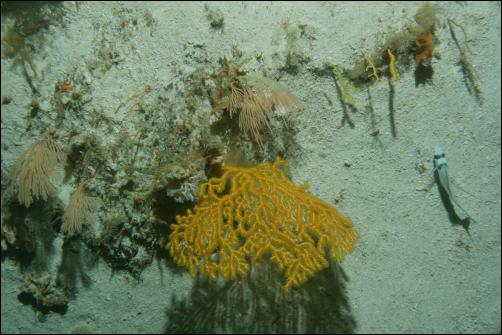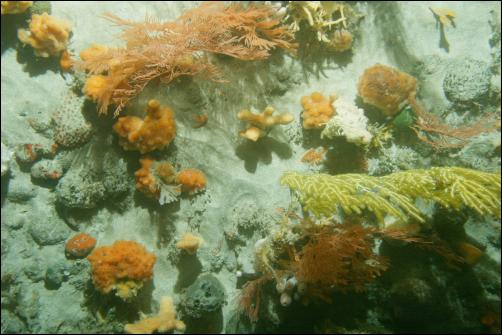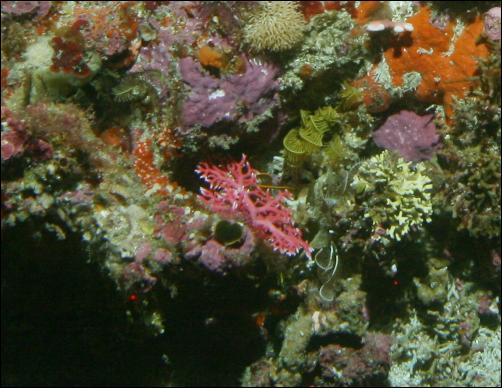Census time for fish and habitats around New Zealand
Census time for fish and habitats around New Zealand
NIWA Media Release
NIWA’s latest voyage of discovery will examine the expansive continental shelf around New Zealand looking for our biodiversity hotspots.
NIWA’s Research Vessel Tangaroa sets sail tomorrow, on the second 25-day leg of a 42-day voyage of discovery, to survey biodiversity and habitat hotspots.
Tangaroa will be examining a part of the most extraordinary undersea continent on Earth, some of it never before explored. Scientists will focus on areas at depths between 40-200 metres around New Zealand’s continental shelf.
The aim of the Land Information New Zealand (LINZ), Ministry of Fisheries, and Ministry of Science and Innovation (MSI), funded voyage is to improve our knowledge of ‘living habitats’, and their biodiversity, ecological, and fisheries roles on the continental shelf.
The voyage leader, NIWA fisheries ecology scientist Dr Mark Morrison, says the team is “hoping to discover new and important ecological habitats, and see what fish and other species are associated with them, so that we can better manage them.”
Tangaroa will journey from Wellington to Fiordland; around the southern area of Stewart Island to the Southland coast including: Kaikoura to the north, Canterbury Bight, the Otago shelf , Solander Island, Puysegur Bank, and the coast off Dusky Sound. Then Tangaroa will head up to Mahia Peninsula in the East Cape Region, before ending up in Auckland, a trip distance of 2700 km.
Key sites will be mapped and assessed for their seafloor-associated plant and animal collections.
The scientists are working to develop a national fish-habitat classification scheme. The scheme will classify habitats from estuaries right out onto the continental shelf.
The classification scheme will also identify potential threats and stressors to the environment. For example, sediment from the land impacts on fish habitats, as does over-fishing, mining and dredging.
Gathering information from the seafloor, scientists on the R.V. Tangaroa will use a number of techniques to gather information during the voyage.
The Deep Towed Imaging System camera (DTIS) will be used to take pictures and videos of deep-sea biodiversity and seafloor habitats at every stage of the journey capturing more than 200 hours of underwater footage,” says Dr Morrison.
Multi-beam echo sounders will be used to image large areas of the seafloor, which will then be combined with the DTIS footage to create three-dimensional seafloor habitat maps.
Multi-beam sonar will scan a wide swath of the seabed in great detail by emitting a fan of sound beams onto the seafloor.
Biological sampling will be conducted for formal taxonomic species identifications, including key species that are ‘habitat-formers’ around New Zealand’s mainland continental shelf.
“We will be using the multi-beam sonar to inform the biological sampling,” says Dr Morrison, “gaining a good idea of what habitat types exist and what fish associate with them. We are especially interested in finding and identifying fish nursery habitats. From this work, we hope to be able to predict where important fish habitats occur around other areas of New Zealand’s full continental shelf.
New Species
We also expect to see some new species given that these habitats have not been sampled much in the past. For example, in the recent offshore Bay of Islands Ocean Survey 20/20 survey, discoveries included new species of algae, a cusk-eel, a rockfish, and a small fish known as a ‘triple-fin’.
The areas of most interest to the scientists are those with outstanding or uncommon habitats. There is particular emphasis on areas where there are large numbers of organisms that group together to form a habitat, including organisms such as corals, gorgonians, bryozoans, sponges, ascidians, bivalves, tubeworms, sea pens, and hydroids. Such habitats are disproportionately important in the ecological ‘goods and services’ that they provide, many of which are of direct benefit to humans, such as fisheries production.
The areas that the scientists will visit are based on existing scientific knowledge of likely ecological ‘hotspots’, and information gleaned from interviews with 50 experienced fishers. “We’ve based a lot of where we are going on the information provided to us from fishers - from the areas that they have fished in, and from historical information,” says Dr Morrison.
Dr Morrison says the surveys are very important for New Zealand fisheries and for biodiversity classification. “If we don’t know what habitats are out there, it is difficult to manage them wisely so the benefits that they provide us are conserved.”
Juvenile tarakihi sleeping at night on carbonate gravel (the remains of shelly animals) with various gorgonian fans, off North Cape.

Corals, bryozoans, and other invertebrates, Three Kings Islands.

A sponge garden with gorgonians, off North Cape

ENDS


 Consumer NZ: Despite Low Confidence In Government Efforts, People Want Urgent Action To Lower Grocery Bills
Consumer NZ: Despite Low Confidence In Government Efforts, People Want Urgent Action To Lower Grocery Bills NZ Banking Association: Banks Step Up Customer Scam Protections And Compensation
NZ Banking Association: Banks Step Up Customer Scam Protections And Compensation The Reserve Bank of New Zealand: CoFR Seeking Feedback On Access To Basic Transaction Accounts
The Reserve Bank of New Zealand: CoFR Seeking Feedback On Access To Basic Transaction Accounts 2Degrees: Stop The Pings - Half Of Kiwis Overwhelmed By Notifications
2Degrees: Stop The Pings - Half Of Kiwis Overwhelmed By Notifications Electricity Networks Association: How Many More Trees Need To Fall On Power Lines Before The Rules Change?
Electricity Networks Association: How Many More Trees Need To Fall On Power Lines Before The Rules Change? Parrot Analytics: Netflix Earnings - Price Hikes With Minimal Churn | Will Netflix Be A Bright Spot For Markets?
Parrot Analytics: Netflix Earnings - Price Hikes With Minimal Churn | Will Netflix Be A Bright Spot For Markets?



